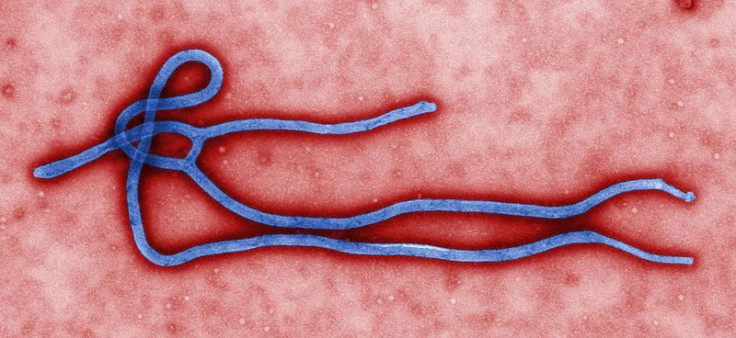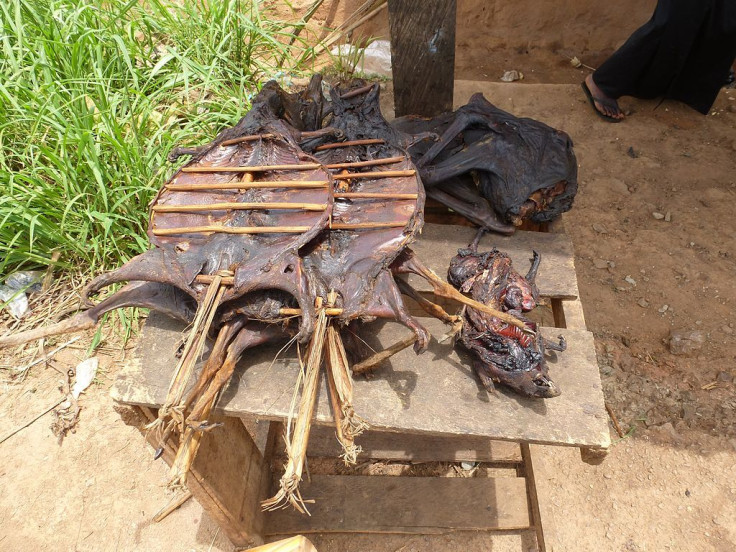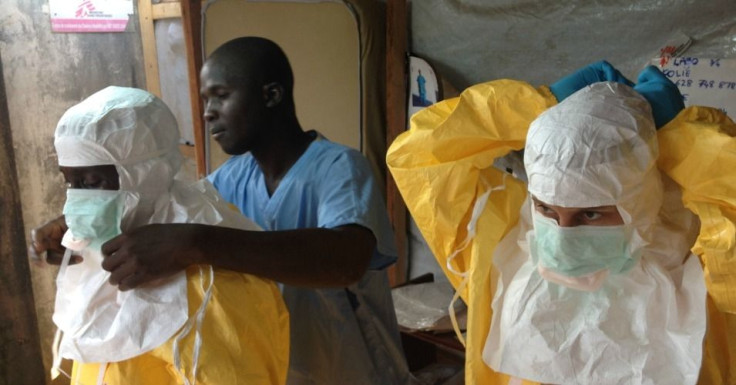Ebola Explained: What Happens When One Of The World’s Deadliest Viruses Invades Your Immune System

The name “Ebola” most likely triggers terrifying images: people in Africa convulsing in pain and bleeding through all orifices, then dying in a matter of days. These imaginary scenarios probably aren’t too far off from the real thing, since the disease is vicious; it is, however, also important to remember that it’s unlikely that it could spread to the U.S.
West Africa is currently battling the worst Ebola outbreak in all of recorded history — with over 900 deaths and an even higher number of infections. While most people (about two-thirds of all cases) have succumbed to the virus, a handful have managed to survive, thanks to various experimental treatments. Two Americans who were infected with the virus while working in West Africa have been flown to Atlanta, to be treated with experimental medications. So far, both Dr. Kent Brantly and Nancy Writebol are slowly recovering.
Ebola is a scary virus, wiping out most of its victims quickly. Many Americans were fearful — or even angry — that the Centers for Disease Control and Prevention (CDC) decided to bring two infected patients back to the U.S., essentially transporting the virus from one continent to another. But understanding how the virus spreads, attacks the body, and is treated, might help you be somewhat less concerned about its transmission in the States.
Origin Of The Virus
Though scientists still aren’t completely certain where the virus originated, the consensus is that the disease can be traced back to infected animals in rainforest regions of Africa. Bats, in particular, may carry the virus without being affected by it. In many African countries, hunters gather “bushmeat” from the wild, animal meat that consists of dead dogs, pigs, or bats which are then eaten or used to make soup. Naturally, if an infected animal isn’t cooked properly and then eaten, it’s only a matter of time before humans begin spreading the virus to one another in rural areas.

The Ebola virus was first identified in 1976, when there was an outbreak in Zaire (also known as the Democratic Republic of the Congo) and Sudan, both of which are located in central Africa. The disease first appeared near the Ebola River, hence the name. There are several different Ebola virus strains, and the most deadly one is the Zaire ebolavirus strain, which is the culprit in West Africa’s current outbreak. The virus causes Ebola hemorrhagic fever (EHF), also known as Ebola virus disease (EVD), which kills up to 50 to 90 percent of infected people.
Once the virus has infected humans, it’s spread through the contact of bodily fluids — such as blood, vomit, or sexually transmitted fluids. Scientists haven’t documented any cases in which a person was infected by simply standing near a diseased person. Other infectious diseases, like SARS, are more easily transmittable because they are spread through the respiratory route.
The Infection
After a person is infected, symptoms can appear between two and 21 days. The infected person will first begin experiencing a headache, lack of appetite, a sore throat, and fever. The Ebola virus attacks the immune system and begins destroying T-lymphocyte cells, which are the same cells that HIV attacks. Ebola, however, is far more aggressive and vicious in killing these cells, which are essential for maintaining the immune response. Soon, the patient's body will begin to ache all over; they will begin vomiting and experiencing diarrhea. The infected person will also be extremely contagious at this point, a hazard to anyone who comes near them. The next week, however, will determine whether they will die from the virus or if they will survive — it all depends on whether they enter the worst and last stage, called the “cytokine storm.”
The ‘Cytokine Storm’
Then comes the scary part. At this point, the Ebola patient’s condition has deteriorated significantly, with the immune system turning on itself. The terminal phase of Ebola is the “cytokine storm,” which occurs when the immune system begins attacking every organ in the body, bursting blood vessels and making the infected person bleed both internally and externally, through the eyes, vomit, and diarrhea. “You are now at the peak of infectiousness as Ebola virus particles, ready to find their next victim, pour out of your body along with your blood,” Derek Gatherer, a lecturer at Lancaster University, writes on The Conversation.
Treatment
There is no cure for Ebola, and until scientists produce an effective vaccine, many poor, rural areas in Africa are left with simple and supportive care. Patients can receive oral rehydration, which is an attempt to flush the body with water and electrolytes, as the body can become severely dehydrated through diarrhea. Other forms of supportive care include procoagulants to help control bleeding; managing oxygen levels, pain management, and medication to treat secondary infections.
Research is underway to develop a vaccine, but in the meantime doctors have used a few experimental drugs and treatments. Both Americans who were flown to Atlanta, Ga. after they were infected were given “top secret” vials of a new drug called ZMapp. Brantly received his first dose of ZMapp about nine days after falling ill, and felt better within an hour after taking it. Writebol, meanwhile, also began experiencing limited improvement after taking a dose of the experimental serum.
Another remarkable form of treatment that has shown positive results in the past involves blood transfusions and antibodies. The blood of a survivor of the Ebola virus, filled with antibodies, is transfused into the newly infected patient; these antibodies then get to work in fighting the disease. When this serum was used in patients during a 1995 Ebola outbreak in the Democratic Republic of Congo, 7 out of 8 survived. In the case of Kent Brantly, a 14-year-old Ebola survivor who had been treated by Brantly himself donated a vial of his blood to be used on the doctor. Brantly received the transfusion days before the ZMapp treatment was flown into Liberia. Thus far, both Americans are in stable condition in Atlanta, but remain isolated and closely watched.

Survival, Recovery
Ebola survivors will remain infectious for a while and would need to be isolated for some time. Bodily fluids would still contain the virus, and it can be transmitted sexually up to 40 days after they begin feeling better. Often, quarantined patients’ clothing, household items, and any personal belongings must be burned; many African survivors end up losing their jobs and having to live through the stigma of being a “contaminated” person, though they stop being infectious after a while. Some survivors are even working with the World Health Organization to spread information about the disease and reduce stigma.



























